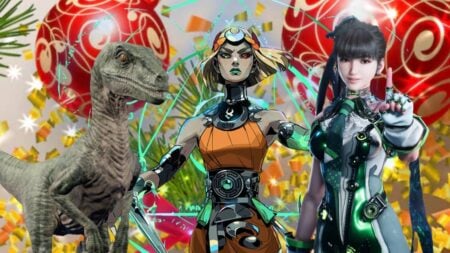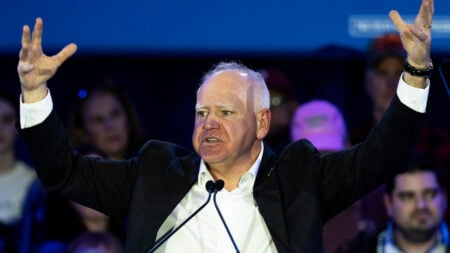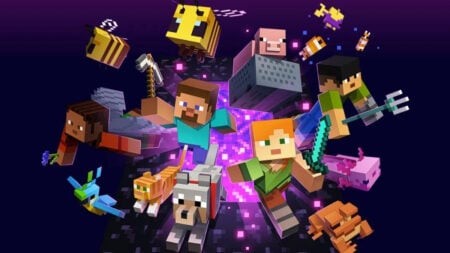Skip To...
Editor’s note: This interview was conducted by Jason Robbins
Felix Jorge is a versatile talent known for his expertise in the realms of virtual production, co-founding Narwhal Studios, and serving as the Chief Communications Officer at Arctic7. Felix is one of the leaders in his field and is responsible for fusing the movie, tv, and gaming worlds in a way that has never been done before. Along with his team, Felix manages to not only create these worlds digitally but, through the use of VR, immerses directors and actors into them as well. Last month, The Nerd Stash was given the chance to speak with Jorge to delve into his role as a Virtual Production Supervisor and explore his contributions to the entertainment industry.
As a Virtual Production Supervisor, Jorge specializes in the field of visualization animation and world-building. His role begins during pre-production, where he collaborates with the creative team, including the visual effects supervisor, director of photography, and production designer. His goal is to help determine the appropriate production process, ranging from traditional methods to cutting-edge virtual production techniques.
“Typically, when I start on a project, I read the script, and I help the team identify what process they use. That could be if they’re going to go a traditional route or if they want to use traditional VFX or if they want to literally just do an on-location shoot.”
That all sounds quite simple on paper, but massive differences within each process can result in three very different-looking products. But how did Felix end up in Virtual Production to begin with?
Felix’s Transition into Virtual Production

“There are different kinds of virtual production supervisors. My experience is in visualization animation but very very, very much also in world building and final. Often, my role entails collaborating with the effect supervisor and with the director of photography production designer.
Jorge’s journey into virtual production began during the early stages of the field’s development. Initially working as a visualization artist, he collaborated with directors and production designers to conceptualize scenes for traditional shoots. However, as virtual production gained prominence, Jorge transitioned into a supervisory role, taking on projects like The Jungle Book and supervising the virtual art department for The Mandalorian Season 1.
Notable Projects and Blockbusters

“I have been a very lucky individual. Some of my favorite films that I worked on were X-Men Days of Future Past, Avengers: Age of Ultron, Ironman 2…”
Jorge has had the privilege of contributing to an astonishing array of blockbuster films. Some of his most notable projects include “X-Men: Days of Future Past, Avengers: Age of Ultron, Iron Man 2,” and The Jungle Book. In each of these projects, he played a crucial role, overseeing the creation of digital sets and environments that seamlessly integrated with live-action sequences to create believability within the unbelievable.
One of Felix’s recent achievements was his involvement in “Ant-Man and the Wasp: Quantumania.” In this film, his team was key in designing and constructing the digital sets that brought the quantum realm to life. Their work involved collaborating with creatives throughout the team, including the director of photography and production designer, to ensure a seamless blend of live-action and digital elements. The result is one of the more dazzling displays of CGI that you can find in a film.
Unreal Engine and Virtual Production Tools

“We used to use Unity, but then when we started on the Mandalorian, the challenge really was around creating a filmmaking process that would be a digital process using virtual production, but like it could go all the way up to the photorealistic quality.”
Jorge highlights the significance of Unreal Engine in modern virtual production workflows. While he previously used Unity for some projects, Unreal Engine’s evolving toolset has made it the preferred choice for many in the industry. These tools enable filmmakers to explore and interact with virtual sets and environments using VR headsets, iPads, and other devices, facilitating a collaborative and immersive approach to pre-production. The VR gaming space is also an area where Jorge has enjoyed success, playing a key role in the creation of Jurassic World VR.
Collaborative Filmmaking in Virtual Space

When asked about production over the past few years, Jorge surprised us when he explained that much of his virtual production team wasn’t on set to begin with.
“Most people were remote. Actually, we had a little office with everyone having their own space. We shipped machines with the virtual production tools to different creatives. The production designer had a VR headset, the producer had a VR headset, as did the different art directors.”
Felix Jorge explains the collaborative nature of virtual production, where different members of the creative team use specialized tools to work together in a virtual space. The VR nature of movie production is both the present and the future when it comes to collaboration during the designing process. Directors can visualize scenes, adjust camera angles, and plan action sequences, all while the production designer alters the sets in real-time. This collaboration between VR and the real world opens an entirely new realm for creating media and will likely be the standard as headsets become more sophisticated.
“We’ve had sessions where the actors are invited to. The pre-production is where they have headsets to actually explore the world before going onto the set so that they’re ready beforehand. What we hear repeatedly is that it’s very immersive.”
While Felix Jorge primarily operates during pre-production, he occasionally works directly with actors and on-set teams to ensure the seamless integration of virtual prodcution sets with live-action elements. His role extends to verifying that the digital worlds align with the physical sets, lighting scenarios, as well as camera placements. The addition of VR into the film space allows actors to understand the virtual environment they will be seen in by viewers, and it allows them to get a better sense of space compared to working with just a green screen.
Felix Jorge’s career as a Virtual Production Supervisor has been marked by his ability to blend artistic creativity with cutting-edge technology. His work has played a pivotal role in enhancing the visual quality and realism of some of the industry’s most iconic films. With Unreal Engine and other virtual production tools continually evolving, Jorge remains at the forefront of shaping the future of filmmaking, creating immersive cinematic experiences that captivate audiences worldwide.
Translating Film Experience to Gaming

While Jorge is most well-known in the world of film and television, he has also taken on projects in the video game realm as well.
“I work in film and movies, but then with Arctic7, I helped them communicate with both the game side and the film side. So with them, I’m associated with all the game studios, so I do work with them as well. At the game level, we have a game called Bonfire, which secured its funding. It’s our own IP.”
While the details of the game Bonfire are under wraps, the transition from film and TV to video games is a seamless one for Jorge. He helps in game development by using virtual production to build schematics, influence game design, and bring storytelling help into the games. The line between TV, film, and video games gets thinner the more technology carries over to each, and the skills of someone like Jorge to blend all three into one project are not to be underestimated.
“We were the guys hired to do proof of concepts that Unreal Engine could do photorealistic movies in the Mandalorian season one. We were going against the giant, and it’s like they’re telling us you can’t do it.”
Jorge is part of the virtual production team responsible for making The Mandalorian one of the more graphically impressive shows out there. The blend between the real and the fake is so tight that it takes a lot to distinguish between what is done behind the scenes and what is done on camera. The doubt he faced on his way to proving this can be done is an interesting look into the expectations of studios and how they can sometimes limit themselves when underestimating the talent of the effects teams.
Our interview was a fascinating deep dive into what happens behind the scenes of some of the most iconic blockbuster films of all time, as well as an intriguing look at where the media industry as a whole will one day go. Jorge is one of the pillars of the virtual development revolution, and we can’t wait to see what he creates next.







